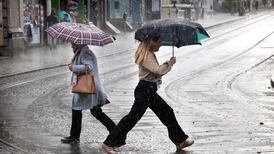The Fianna Fáil TD for Galway West, Éamon Ó Cuív, speaking on Newstalk radio over the weekend, suggested that Irish Water could be replaced by a body such as the National Roads Authority (NRA).
Under the plan the new body would oversee the construction, maintenance and repair of the State’s water and sewage infrastructure, with the work being carried out by local authorities.
The plan is in part aimed at getting rid of an organisation which, it is alleged, is top-heavy with highly-paid management and too prone to spending money on consultants.
The argument flies in the face of what water companies, and regulators, in a number of jurisdictions say about the ability of well-run utilities to achieve efficiencies while providing a level of service superior to the bad outcomes achieved over the decades by local and regional authorities.
Interestingly, the roads authority can be taken as an example of the difference between centrally-funded delivery of infrastructure, and infrastructure supplied and maintained by a utility with its own income stream.
Fall in investments
The 2014 accounts for the NRA (dissolved last year) show €593 million was spent on road construction and improvement that year, and €84 million on road maintenance and management. In 2010 the figures were €1.2 billion and €164 million.
There has been a steady fall in capital expenditure by the NRA over the course of the economic bust. Taking the expenditure figure in 2006 as a starting point (100 per cent), expenditure had fallen to 40 per cent by 2013.
In contrast, the ESB has been steadily investing in the maintenance and improvement of its infrastructure right through the bust. Having risen to about 130 per cent a year or two after 2006, it fell back to about 100 per cent thereafter, and has hovered around there ever since. Capital expenditure in 2014 was €960 million (not all of it in this jurisdiction).
There are a number of points worth making about the comparative performance of the two bodies. First of all, it is helpful for an economy that is on its knees that someone is spending significant sums on capital investment. Many commentators argued during the bust that what Ireland most needed was economic stimulus, rather than austerity.
The ESB, by charging its customers, was able to maintain its capital investment programme right through the bust despite the financial crisis being suffered by the State.
Furthermore, because it paid its own way, the borrowings of the ESB didn’t feature on the State’s books when the world and its mother were complaining about the extent to which they were in the red.
Central funding
The fall in capital investment in our roads as a result of the bust illustrates how paying for infrastructure from central funding is problematic. When the pressure is on, the temptation is to cut back on investing in underground pipes and sewage works. Over the years, this leads to dangerously inadequate systems.
Also, infrastructure suffers from not being maintained. Just as it makes sense financially to get your car serviced regularly, so is it wise to spend money on minding your pipes and sewers. Investment in infrastructure that is not then properly maintained, is an inefficient way to operate.
Because it charged its customers, the ESB was able to operate efficiently despite the pressure on the public finances, and continue to invest in its assets. This was something from which all of society benefited, and benefits.











